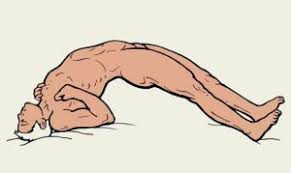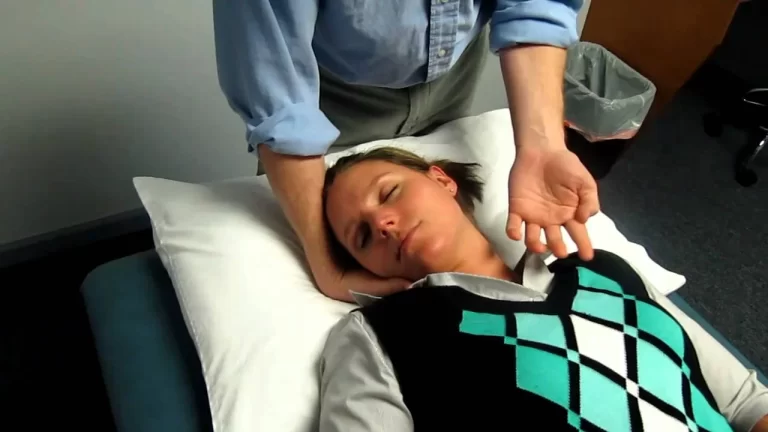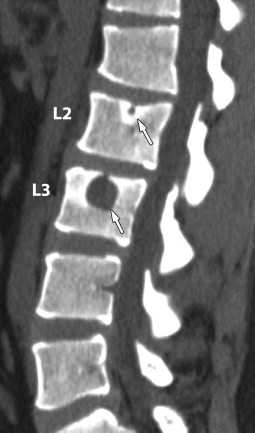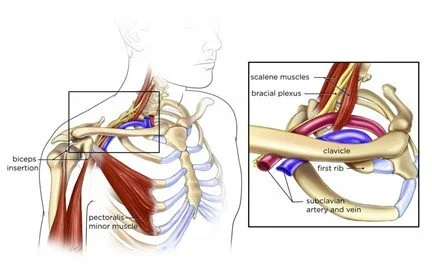Tibialis Anterior Tendonitis
Table of Contents
What is tibialis anterior tendonitis?
Tibialis anterior tendonitis is an injury of the anterior tibialis tendon in the front of the ankle where it meets the foot. The tibialis anterior is a muscle that lies at the front of the tibia bone and attaches to several bones in the foot via the anterior tibialis tendon. The tibialis anterior is primarily responsible for moving the foot and ankle upside toward the head, and, controlling the foot as it lowers to the ground during walking or running.
Tibialis anterior tendonitis is also termed Tibialis anterior tendinopathy. It is an overuse injury causing pain and stiffness at the front of the leg.
The tendon is essential in pulling the foot up (dorsiflexion), lifting the foot off the ground while running, and turning the foot inward (inversion).
Whenever the tibialis anterior muscle contracts or is stretched, tension is placed through the tibialis anterior tendon. Damage to the tendon can occur if this tension is excessive due to too much repetition or high force or load. Tibialis anterior tendonitis is a condition whereby there is damage to the tibialis anterior tendon with subsequent inflammation and degeneration or tears.
This tendon is one of the main support mechanisms of the arch of the foot and as a result, with its dysfunction, the arch of the foot is no longer supported while walking which can result in a flat foot deformity or the ‘foot slapping’.
What are the Causes of Tibialis Anterior Tendonitis?
Overuse is the main cause, but there are factors that can increase the chance of occurring tibialis anterior tendinopathy or tendonitis.
- Sports that require sudden, repetitive jumping and quick starts, or kicking and running in sports, especially running hills and long distances
- Poor physical conditioning (strength and flexibility)
- Flat feet
- Any previous injury to the foot, ankle, or leg
- Due to more stress on muscles.In activities like fast walking or running (especially up and downhill)
- Running up and down hills means the tibialis anterior muscle has to work harder than the normal ground-level walk.
- In running uphill, the muscle must lift the foot higher than normal.
- In running downhill, the tibialis anterior muscle is working eccentrically (which means it is lengthening at the same time as contracting), placing even greater loads through the muscle.
- Sudden changes in training routines: increased frequency of training
- Trauma: acute trauma to the tendon can result in its degeneration or tear. This is commonly seen in inversion(Turn inside) ankle sprains.
- Certain Connective tissue disorders
- Patients may also develop this condition following direct rubbing on the tibialis anterior tendon, which may occur due to excessive tightness of strapping or shoelaces over the tendon.
Signs and symptoms:
Symptoms are:
- Pain, tenderness, and stiffness at the front of the ankle when bending the foot or toe move upward.
- Sometimes swelling and redness over the front of the ankle where it meets the foot.
- Pain with ankle motion, especially when pulling the foot up or when turning the foot in
- pain that worsens with increased activity, mostly in running or walking up hills.
- A cracking sound (crepitus) feel when the tendon is moved up and down or touched.
- May have a weakness in lifting the foot upwards which may result in a foot drop or slapping gait.
The pain associated with this condition tends to be of gradual or slow onset, which progressively worsens over weeks or months with the continuation of activity that aggravates the condition or working continuously. Patients with this condition may also experience pain on firmly touching the tendon.
However, if you continue to exercise or work, the tendinopathy can worsen to a point where your pain is present for longer periods during exercise until it is present all of the time. Other symptoms can include:
- Gait problems
- Stiffness
- Deformity
- Weakness
Contributing factors for the development of tibialis anterior tendonitis:
There are several factors that can incline patients to develop this condition. These need to be assessed and corrected with the help of a physiotherapist and may include:
- Muscle tightness (especially the tibialis anterior or calf)
- Muscle weakness (particularly the tibialis anterior and tibialis posterior)
- Joint stiffness (particularly the foot and ankle)
- Inappropriate or excessive training
- Poor foot biomechanics
- Inappropriate running technique
- Inappropriate footwear
- Inadequate warm-up
- Inadequate rehabilitation following a previous injury in the ankle or lower limb
- Neural tightness
- Muscle imbalances
- Being overweight or more weight
Diagnosis:
- Foot and ankle assessment by a specialist. An X-ray, MRI, or Ultrasound may be performed to get a clear idea of a tear or strained tendon or to assess any severity.
- A thorough subjective and objective examination of a foot by a physiotherapist is usually sufficient to diagnose tibialis anterior tendonitis.
- Assessment tests:
- Specific tests are to be done to diagnose tibialis anterior tendon injuries including resisted dorsiflexion, where the therapist will resist the patient attempting to lift the foot up (dorsiflexion).
- Or resisted eccentric inversion, in which the therapist moves the foot from inversion to eversion whilst the patient resists. While testing pain at the front of the ankle may indicate tibialis anterior tendon pain.
How to Prevent Tibialis Anterior Tendonitis?
- Do a correct warm-up and stretching of the tibialis anterior muscle before practice or competition.
- Maintain ankle and leg flexibility.
- Maintain muscle strength and endurance.
- Use proper technique while walking.
- Allow time for rest and recovery between practice and competition.
- Wear arch supports for flat feet.
- Use proper equipment (for example, the correct length of cleats).
- Complete rehab after a previous injury.
Treatment of Tibialis Anterior Tendonitis:
When the anterior tibialis tendonitis condition is diagnosed early, it can be treated conservatively. If you have all these symptoms, start treatment with the RICE protocol at home also.
- Rest: Rest is the most important factor that prevents the foot to be move more.
- Ice: Cold pack or ice massage helps to increase blood circulation in the foot which heals faster.
- Compression: A compression bandage in the foot reduces swelling in the foot.
- Elevation: Elevated leg helps in reducing swelling in the foot.
Medical treatment:
The doctor may recommend anti-inflammatory medicines(NSAIDs), such as ibuprofen or naproxen. Take these medicines as directed by your physician.
Other minor pain relievers, such as acetaminophen or paracetamol, may be used to relieve pain.
Use of cold and heat:
Cold should be applied for 10-15 minutes every 2 to 3 hours and after any activity that makes symptoms again or aggravates. Use ice packs or an ice massage on the pain area.
Heat should not be used on a new injury, it can increase inflammation but may be used before performing stretching and strengthening activities prescribed by your health care provider or athletic trainer. Use a hot pack or a warm soak.
Rest:
Rest or decreased activity should help to decrease pain and swelling.
Orthopedic aids:
A cast or orthotic or walking boot may be advised in severe or complicated cases to limit activity and improve pain.
A heel lift or arch support (orthotic) may be used in a few cases.
Rehab:
Rehab started with the help of a physical therapist or athletic trainer can increase flexibility and strength, decrease pain and help the athlete return to activity.
Bracing, physiotherapy treatment and anti-inflammatory medications (NSAIDs) can also help in relieving pain and inflammation. Stretching of the calf muscle may also help by putting less strain on the front of the ankle when flexing the foot. Not using corticosteroid injections for this condition, these steroids can actually accelerate the degenerative process and make the tendon more susceptible to further injury, and recovery time may increase and may increase the likelihood of rupture of the tendon.
Surgical treatment:
When conservative methods do not alleviate or decrease symptoms, surgery may be another option. Typically surgery includes debriding any damaged tendon (removing tendon). Surgery may possibly lengthen the calf muscle. When an injured tendon requires surgery and should only be performed by a specially trained foot and ankle surgeon.
Physical therapy treatment
Physiotherapy is very important in the treatment of tibialis anterior tendinopathy(TAA). Initially, your physiotherapist will be able to diagnose your problem through various special tests, establish its severity and devise a treatment plan.
Treatment may involve:
Rest and apply the RICE principles of rest, ice, compression, and elevation, until there is an absence of pain. Apply an ice pack or cold therapy for the first two days of pain. Cold can be applied for 15 minutes every couple of hours, reducing the frequency of cold therapy as pain decreases.
After an initial, acute inflammation has settled, applying heat and using a heat retainer-type ankle support may be more beneficial, not cold therapy. Put padding into the shoe if the injured area is pressing on the tendon at the front of the ankle, aggravating the injury.
- Massage:
Massaging the area will increase blood circulation in the area, and reduces pain and swelling.
- Range of movement exercises:
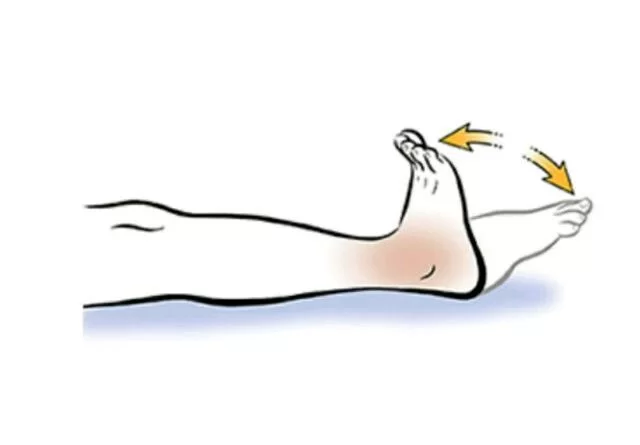
After the pain decreases or subsides, initiate movement in the ankle: Dorsiflexion, Plantarflexion, Eversion and inversion, and Circular movement of the ankle. First, start with active movement in the available range, and later on, passive movement in full range without pain. Followed by active-assisted movement. At last resisted movement to increase the strength of the muscle.
- Hydrotherapy:
Hydrotherapy includes exercise or movement in the water. It will reduce the load on the ankle as the buoyancy force works in water.
- Orthotics:
An orthotic device can decrease stress on the anterior tibialis muscle by properly supporting the foot. The device helps by pushing the foot and relieving pressure at the anterior tibialis muscle if the arch is compressed or flattened. The orthotic device supports the foot to avoid overcompensation if the discomfort is caused by a collapse of the arch or foot flat or other mechanics in the foot.
While the mechanics of the foot might not be the source of pain in the tibialis anterior muscle, they do play a role in rehabilitation and exercise. And if the anterior muscle is already working harder than normal function, it could slow your recovery time.
When pain decreases or pain allows exercises to stretch and strengthen the tibialis anterior muscle can be started, particularly resisted eccentric inversion. The aim is to slowly increase the load through the tendon so it can cope with normal training or walking.
- Stretching:

To stretch the tibialis anterior muscles, the following exercise should be started:
The athlete kneels down sitting on their heels. Maintaining the position, gently push down on the heels to feel a stretch in the front of the lower leg or over the tibia.
Hold the stretch for 10 to 20 seconds and repeat it 3 times.
- Strengthening:
Strengthening the tibialis anterior muscle must be done very slowly. As this injury is due to overuse of the ankle, going too hard at the strengthening exercises could make the condition worse again.
The aim is to slowly increase the load on the tendon so it can cope with normal training demands. Repeating foot raises in a high sitting position will work the tibialis anterior muscle.
Probably a better exercise is resisted eccentric inversion. The therapist moves the foot from an everted(outwardly directed) position to an inverted(inwardly directed) position whilst the patient attempts to resist the movement.

- Footwear:
Wearing appropriate footwear can alleviate or reduces tibialis anterior pain. Orthotic devices work best when paired with suitable footwear which enables them to perform to their full capacity or work. They can be used with a neutral running or walking shoe in most situations, but your orthotic specialist may advise you to wear a stability shoe with your orthotic devices.
Outcomes:
Tibialis anterior tendonitis is a condition affecting the foot due to overuse of the lower leg. This condition causes pain, inflammation, and swelling in the foot. Medical and surgical treatment helps in healing the condition. But, physical therapy is essential in this condition. Physiotherapy plays an important role in healing the condition without medical treatment. Most patients with this condition heal completely with an appropriate physiotherapy program. These include a range of motion activities, massage, stretching, and strengthening of the muscle. This treatment can be a lengthy process and may take several weeks to months in patients who have had their condition for a longer period of time. Minor cases or acute conditions that are identified and treated early can usually resolve within a few weeks. Early physiotherapy treatment is vital to quicken recovery and ensure an optimal result.
FAQs:
How long does it take for tibialis anterior tendonitis to heal?
Healing may take 1-2 weeks to improve if you have mild anterior tibialis tendonitis. Or, if you’ve severe anterior tibialis tendonitis, it may take some months to heal completely; however, some medication can speed up or faster the healing process.
Does tibial tendonitis ever go away?
It can take between 6 to 9 months (or longer) for your tibial tendonitis symptoms to improve and your tendon to heal.
How do you treat tibialis tendonitis?
The non-surgical treatment methods used for anterior tibial tendonitis include:
Limiting activities that place stress or load on the ankle or foot, such as sports, works.
Applying ice packs on the foot to reduce pain.
Elevate the foot to reduce swelling.
Taking over-the-counter(antiinflammatory medicines) medications such as ibuprofen or paracetamol.
Physical therapy to strengthen the tendon.Does walking strengthen the tibialis anterior?
Walk on heels. This activity provides intense exercise or stretches on your tibialis anterior, as your feet are in the same position they would be in if you were doing toe raises to strengthen your shin muscles.
What is the best exercise for the tibialis anterior?
Tibialis Anterior Strengthening Exercises
Seated Toe Raises: Sit on a chair or high sitting position with your feet in front of you. Slowly raise your toes off the floor. …It will stretch the muscle.
Wall Toe Raises: Stand 12 inches away with your back towards the wall and placing hand on the wall for support with your feet hip-width apart. …It will stretch the muscle while activity.
Heel Walk: Stand on both feet hip-width apart with no shoes on and start walking on the heel. It will stretch muscles.


